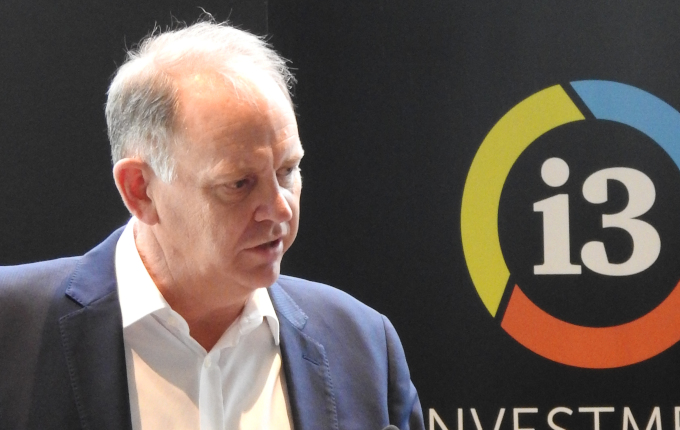Port of Newcastle is looking to diversify its activities away from coal, but the port’s CEO, Craig Carmody, explains it faces some steep hurdles despite having room to grow.
When Craig Carmody joined the Port of Newcastle in 2018 as its new Chief Executive Officer, he got a bit of a shock.
Having previously worked as Head of Strategy and Corporate Affairs at Svitzer, the towage services division of the Copenhagen-headquartered Maersk Group, the emphasis there was on sustainability and innovation.
But the Port of Newcastle was very much the opposite: a fossil fuel behemoth.
“Having worked in Copenhagen and for the Maersk Group, it was very much about clean energy. To come back to Australia and discover that coal was still king was a bit of a surprise,” Carmody says during an [i3] Luncheon in Sydney last week.

Having worked in Copenhagen and for the Maersk Group, it was very much about clean energy. To come back to Australia and discover that coal was still king was a bit of a surprise
Currently, about 55 per cent of the port’s revenue comes from coal, but if the rent it gets from coal terminals is included, then its share of revenue that is exposed to coal quickly rises to over 70 per cent.
“So even though we did 3 million tonnes of grain last year, which was a record, [and you compare that to] 166 million tonnes of coal, and you can see the challenge,” Carmody says.
He says the only way forward for the Port of Newcastle is to build new sources of income.
“So our strategy is diversification. This is not a transition strategy. We have to build other businesses before coal is no longer our main product. We are not building a business on replacing coal, we are building it alongside coal so that when the inevitable decline comes, then the business is supported by that,” he says.
The Port of Newcastle aims to have 50 per cent of its revenue coming from non-coal activities by 2030. At the end of 2018, coal still contributed 98 per cent of the overall volume, while revenues were at 71 per cent. Last year, coal was 95 per cent of volume and 55 per cent of revenue.
“So 55 per cent is brilliant, but that 55 per cent is vulnerable,” Carmody says.
Clean Energy
There are various avenues for diversification for the port. Developing a shipping container terminal seems an obvious choice as the port still has room to grow the number of vessels it docks, but the port is currently constrained by rules that prevent it from competing with Port Botany and Port Kembla on shipping containers.
Carmody has high hopes for developing a clean energy hub at the port.
One of the key strategic benefits of the Port of Newcastle is that it has large areas of undeveloped land, about 200 hectares of it. It also has some of New South Wales’ largest energy users within 10 kilometres of the port.
Carmody’s plan, therefore, is to build a clean energy precinct at the port that can store and distribute liquid hydrogen and ammonia, while it also has its eye on offshore wind turbines and solar energy.

We recently had a meeting with [a large] sovereign fund, which was very keen to invest in the Port of Newcastle, right up until they asked where our electrons come from and then they realised it was all coming from a coal-fired power station. We need to find solutions to that. We can’t wait and sit for 10 years and see who has won. We would be a stranded asset
The added benefit of building such a capability is that the Port of Newcastle can move away from fossil fuel-generated electricity itself, as currently it relies fully on coal-fired power plants for its electricity.
“We’ve spent 10 years fighting in this country [over climate change] and nobody has spent time investing in green electrons. And that is our biggest challenge: the green electrons,” Carmody says.
“We recently had a meeting with [a large] sovereign fund, which was very keen to invest in the Port of Newcastle, right up until they asked where our electrons come from and then they realised it was all coming from a coal-fired power station.
“You could literally see them close their notebook in their head and go: ‘Oh well, we might come back in 10 years’ time.’ That is what we are up against. We need to find solutions to that. We can’t wait and sit for 10 years and see who has won. We would be a stranded asset.”
Craig Carmody will speak at the [i3] Luncheon in Melbourne on 8 November 2022. For more information, please see here.

